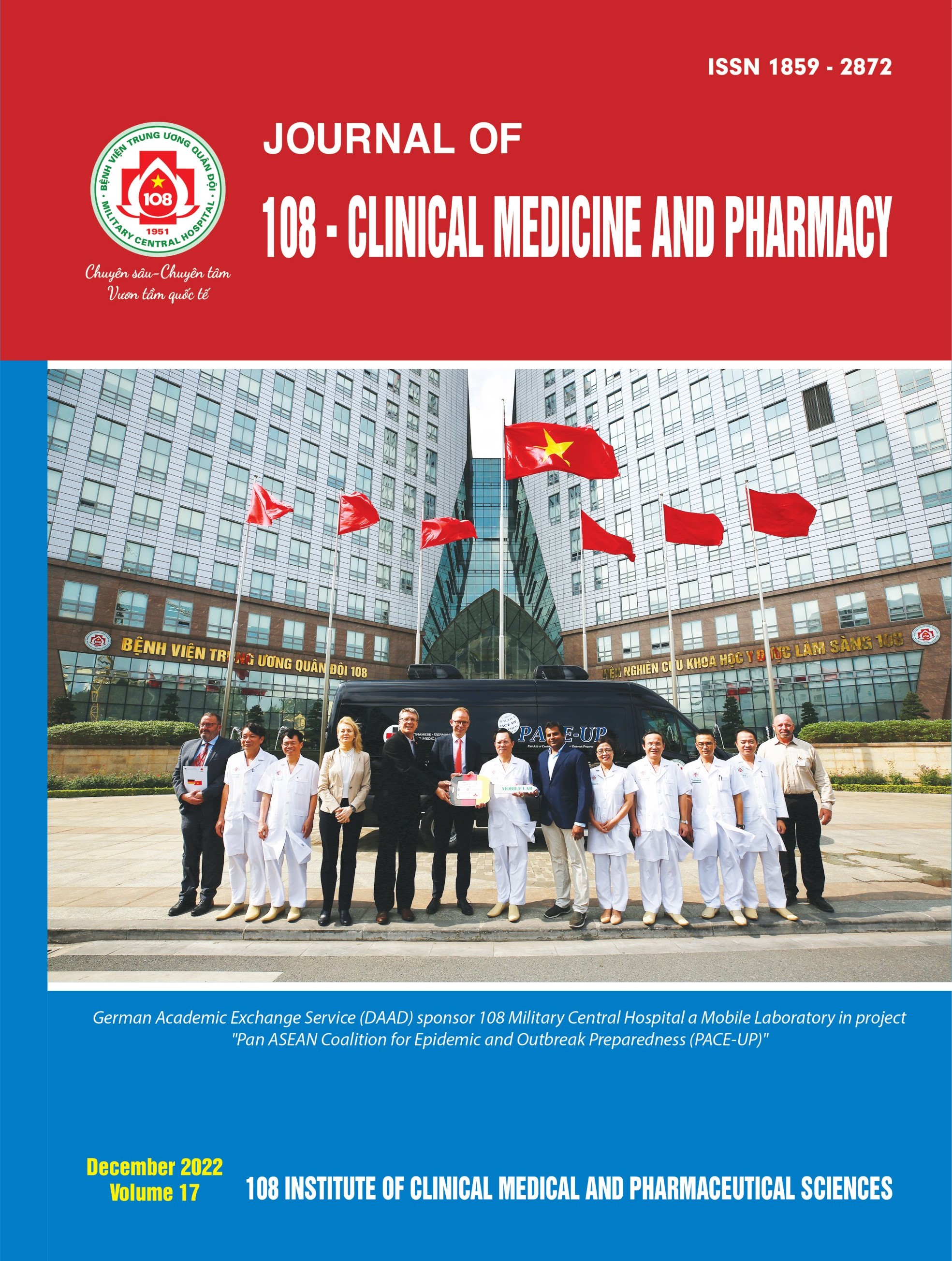Surveying the changes in serum ubiquitin C-terminal hydrolase-L1 levels in severe traumatic brain injury patients
Main Article Content
Tóm tắt
Objective: To investigate the change in serum ubiquitin C-terminal hydrolase-L1 protein (UCH-L1) levels in severe traumatic brain injury patients. Subject and method: Thirty-nine patients with severe traumatic brain injury were treated at the surgical critical care department, 103 Military Hospital. The patients were treated to the protocol, and information was collected in the medical records for research and testing. UCH-L1 at time T0, T1, T2, T3, T4 and T5. A prospective cohort study. Result: Serum UCH-L1 concentration gradually increased from T0 (9.18ng/mL) to T1 (11.59ng/mL) and peaked at T2 (19.9ng/mL), then gradually decreased over time. The median serum UCH-L1 concentration in the surviving group was constantly lower than in the death group. The biggest difference observed at T1 (10.47ng/mL and 46.76ng/mL), however, was not statistically significant with p=0.063, while the difference was statistically significant at T3, T4, and T5. Conclusion: Serum UCH-L1 levels in patients with severe TBI increased gradually from T0 to T1 and peaked at T2, then gradually decreased at T5. Serum UCH-L1 levels in the surviving group were constantly lower than those in the death group, but there was no significant difference between T0, T1, and T2, whereas at points between T3, T4, and T5, the difference was statistically significant.
Article Details
Các tài liệu tham khảo
2. Bishop P, Rocca D, and Henley JM (2016) Ubiquitin C-terminal hydrolase L1 (UCH-L1): Structure, distribution and roles in brain function and dysfunction. Biochem J 473(16): 2453-2462.
3. Thermo Fisher (2016) Human UCH-L1/PGP9.5 ELISA Kit, L.T. Corporation, Editor. 2016: USA. p. 5.
4. Nguyễn Thanh Hải (2012) Nghiên cứu triệu chứng lâm sàng, hình ảnh chụp cắt lớp vi tính và thái độ xử trí chấn thương sọ não nặng. Tạp chí Y học thực hành, 813(3), tr. 34-37.
5. Nguyễn Đình Hưng (2018) Nghiên cứu đặc điểm lâm sàng, cắt lớp vi tính và kết quả phẫu thuật điều trị chấn thương sọ não nặng. Ngoại Thần kinh và sọ não. Học viện Quân Y, Hà Nội.
6. Zaytoun T (2017) Role of transcranial doppler ultrasound as a predictor of outcome in severe traumatic brain injury and its correlation with glascow coma scale and full outline of unresponsiveness score. Journal of Medical Science And clinical Research 5(4).
7. Jha RM, Kochanek PM, Simard JM (2018) Pathophysiology and treatment of cerebral edema in traumatic brain injury. Neuropharmacology 145: 230-246.
8. Papa L et al (2016) Time Course and Diagnostic Accuracy of Glial and Neuronal Blood Biomarkers GFAP and UCH-L1 in a Large Cohort of Trauma Patients With and Without Mild Traumatic Brain Injury. JAMA Neurol 73(5): 551-560.
9. Mondello S et al (2012) Clinical utility of serum levels of ubiquitin C-terminal hydrolase as a biomarker for severe traumatic brain injury. Neurosurgery 70(3): 666-675.
10. Brophy GM et al (2011) Biokinetic analysis of ubiquitin C-terminal hydrolase-L1 (UCH-L1) in severe traumatic brain injury patient biofluids. J Neurotrauma 28(6): 861-870.
 ISSN: 1859 - 2872
ISSN: 1859 - 2872
